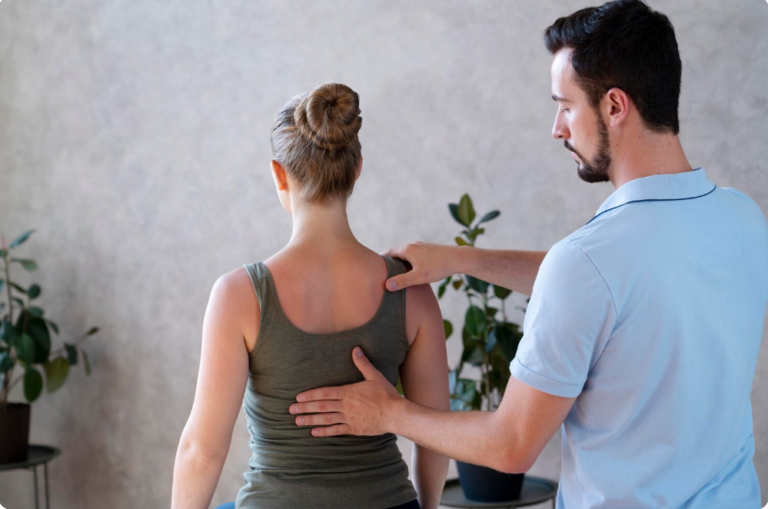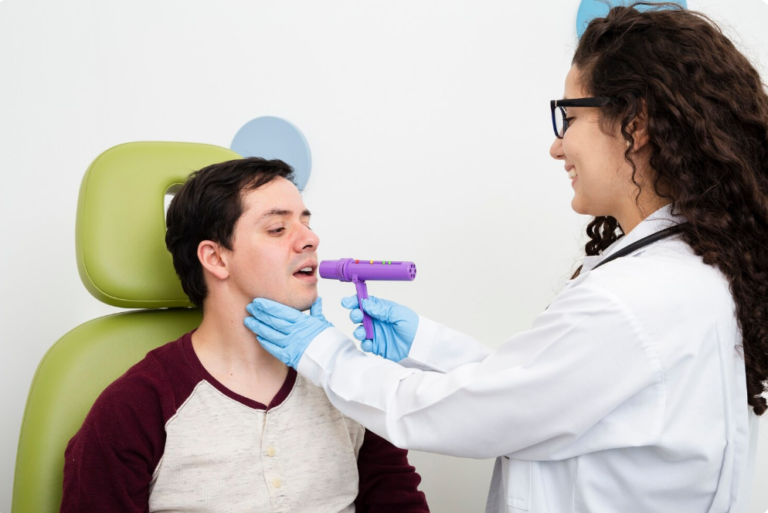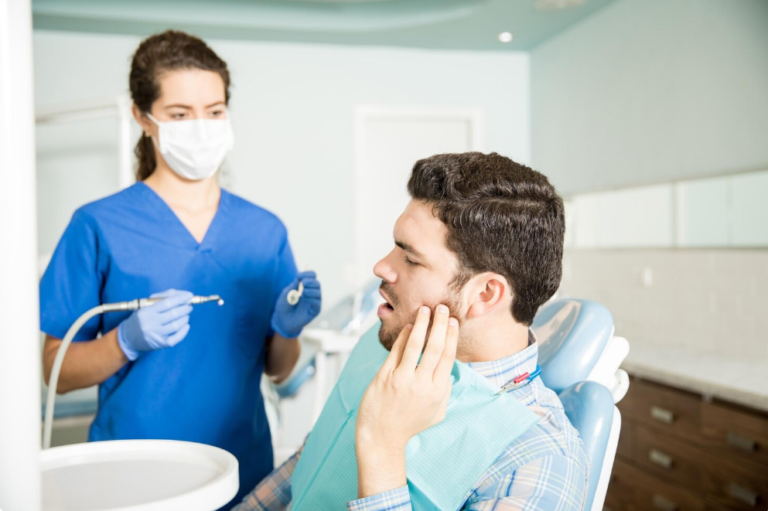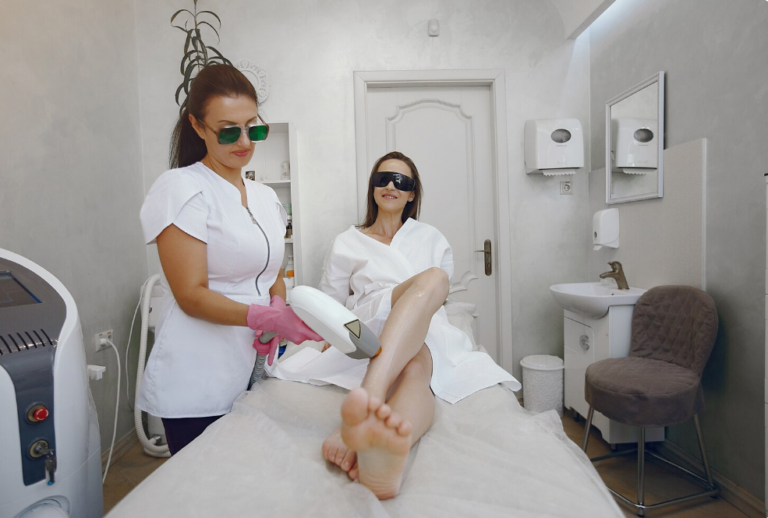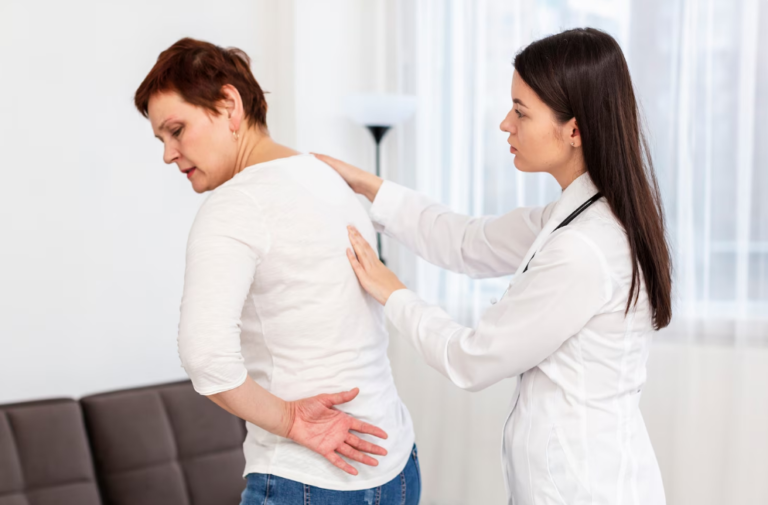Muscular Dystrophy: Support Options for Families

Navigating Your Diagnosis
Getting a diagnosis of muscular dystrophy can feel like a lot to take in. It’s totally normal to feel overwhelmed, confused, or even a bit lost at first. But remember, you’re not alone in this. This section is all about helping you understand what the diagnosis means and what comes next. We’ll break down the different types, what signs to look for, and how these conditions are passed down through families. Knowing the basics is the first step to getting the right support.
Understanding Muscular Dystrophy Types
Muscular dystrophy isn’t just one condition; it’s a group of diseases that cause muscles to weaken and waste away over time. Each type has its own set of symptoms, how it progresses, and when it typically shows up. Some of the more common ones include Duchenne and Becker muscular dystrophy, which primarily affect males, and myotonic dystrophy, which can affect both men and women. There are also limb-girdle dystrophies, facioscapulohumeral dystrophy, and congenital muscular dystrophies, each with its own unique characteristics.
Signs and Symptoms to Watch For
It’s helpful to know what to look out for, both in yourself and in your children. Early signs can sometimes be subtle. For younger kids, you might notice difficulty with things like running, jumping, or getting up from a sitting position. They might also have enlarged calves or a waddling gait. In older individuals, symptoms can include muscle pain, stiffness, trouble swallowing, or breathing difficulties. It’s important to remember that these symptoms can vary a lot from person to person, even within the same type of muscular dystrophy.
Genetic Causes and Inheritance Patterns
Muscular dystrophies are genetic conditions, meaning they’re caused by changes in our genes. These changes can be inherited from parents or can happen spontaneously. Understanding the specific genetic cause for your diagnosis is key. For example, Duchenne and Becker MD are X-linked, which is why they mostly affect males. Myotonic dystrophy, on the other hand, is autosomal dominant, meaning it can be passed down from either parent. Genetic counseling can be really helpful here to figure out the specific inheritance pattern and what it means for your family.
Learning about the specific type of muscular dystrophy, its symptoms, and how it’s inherited can feel like a lot of information at once. Take it one step at a time. Focus on understanding the basics first, and then gradually learn more as you feel ready. There are many resources available to help explain these complex topics in simpler terms.
Connecting With Support Organizations
Facing a neuromuscular disorder can feel overwhelming, but you don’t have to go through it alone. There are many groups out there ready to help you and your family find the resources and community you need. Connecting with these organizations is a really important step.
National Nonprofits for Research and Care
Several large organizations focus on finding cures and improving care for a wide range of neuromuscular conditions. They often provide a central hub for information, support services, and advocacy. These groups are a great starting point for understanding your diagnosis and finding local assistance.
- Muscular Dystrophy Canada: This organization works with individuals and families affected by neuromuscular disorders across Canada. They help remove barriers to access and independence. You can register with them to get one-on-one support, learn about programs, and get help with equipment funding.
- Muscular Dystrophy Association (MDA): The MDA is a well-known resource that supports research, provides healthcare services, and advocates for people with muscular dystrophy. They have a Resource Center that can answer questions and offer guidance.
- Parent Project for Muscular Dystrophy (PPMD): If Duchenne muscular dystrophy is your concern, PPMD is a key organization. They focus on research, awareness, advocacy, and community building, offering specific resources like care checklists.
Specialized Organizations for Specific Dystrophies
Because muscular dystrophies are a group of diseases, some organizations concentrate on specific types. This allows for more targeted research and support tailored to the unique challenges of each condition.
- Facioscapulohumeral Muscular Dystrophy (FSHD) Society: This group connects patients, families, and researchers focused on FSHD.
- Myotonic Dystrophy Foundation: This organization supports individuals and families living with myotonic dystrophy through research and advocacy.
- Congenital Muscular Dystrophy (CMD) Research Foundation: They focus on research and advocacy for those affected by congenital muscular dystrophy.
- Cure LGMD in the US: This group is dedicated to finding treatments and cures for limb-girdle muscular dystrophy.
European Networks for Neuromuscular Research
For those in Europe, or interested in European research efforts, there are networks dedicated to advancing the field. These often work to speed up the process of getting new therapies from the lab to patients.
- European Neuromuscular Centre (ENMC): This network develops tools and resources for clinicians and scientists to help bring promising new therapies to patients more quickly.
Connecting with these organizations can provide a sense of community and practical help. Don’t hesitate to reach out to them; they are there to support you and your family through every step of your journey.
Accessing Essential Services
Getting the right equipment and figuring out how to get around can feel like a big hurdle when you’re dealing with muscular dystrophy. But there are ways to make these things easier. It’s all about knowing where to look and what’s available to help you live more independently.
Equipment and Assistive Device Funding
When a condition like muscular dystrophy affects mobility, having the right tools can make a huge difference in daily life. This can range from wheelchairs and walkers to specialized computer equipment or communication devices. Many organizations and government programs exist to help families fund these necessary items. Often, you’ll need a doctor’s recommendation or prescription to apply for funding. It’s a good idea to talk to your medical team about what equipment would be most beneficial. They can often point you toward resources or even help with the application process. Some groups focus specifically on providing grants or loans for assistive technology, making it more affordable.
- Consult your medical team: They can assess your needs and recommend specific devices.
- Research funding sources: Look into non-profits, government programs, and grants specific to your condition or location.
- Understand the application process: Be prepared for paperwork, including medical documentation and proof of need.
- Explore equipment loan programs: Some organizations offer short-term or long-term equipment loans.
Securing funding for equipment often involves a detailed process. Gathering all necessary medical documentation and understanding the eligibility criteria for different programs are key steps to a successful application.
Guidance on Accessible Travel
Traveling, whether it’s for a vacation or just a trip to the doctor, can present unique challenges. Planning ahead is really important. Look for transportation services that are equipped for individuals with mobility issues. This might include accessible vans or public transport options. When booking accommodations, always confirm that the hotel or rental has the accessibility features you need, like ramps, wider doorways, or accessible bathrooms. Many travel agencies and organizations now specialize in accessible tourism, offering tailored advice and booking services. Don’t hesitate to ask questions and be specific about your requirements.
- Research accessible transportation: Investigate local and national options for accessible taxis, ride-shares, and public transit.
- Plan accommodation carefully: Verify that hotels or rentals meet your specific accessibility needs.
- Look for specialized travel resources: Many websites and organizations offer tips and booking assistance for accessible travel.
- Communicate your needs clearly: Inform airlines, hotels, and tour operators about any assistance you require in advance.
Support for Educational Advocacy
Ensuring a child with muscular dystrophy receives the right support in school is vital for their development and learning. This often involves working closely with the school to create an Individualized Education Program (IEP) or a similar plan. An IEP outlines the specific accommodations, services, and goals for a student. Parents and guardians play a key role in this process. It’s helpful to be informed about your rights and the resources available to support educational advocacy. Many organizations offer guides and workshops to help families understand the educational system and how to effectively advocate for their child’s needs. Building a good relationship with school staff can also make a big difference.
- Understand your child’s rights: Familiarize yourself with laws that protect students with disabilities.
- Collaborate with the school: Work with teachers, administrators, and support staff to develop an effective educational plan.
- Document everything: Keep records of communications, meetings, and your child’s progress.
- Seek external support: Connect with advocacy groups or legal aid if needed.
Finding Expert Medical Guidance
When you or a loved one receives a diagnosis of muscular dystrophy, finding the right medical team is a big step. It’s not just about getting a diagnosis; it’s about building a relationship with doctors who understand the specific challenges of these conditions. This means looking for specialists who are not only knowledgeable but also compassionate and up-to-date on the latest treatments and research.
Locating a Neurologist Specializing in Neuromuscular Disorders
Your primary care doctor can often give you a referral, but it’s worth doing your own research too. Look for neurologists who list muscular dystrophy or neuromuscular disorders as a focus area. Professional organizations and national patient advocacy groups often have directories that can help you find these specialists in your area. Don’t hesitate to ask potential doctors about their experience with specific types of muscular dystrophy and their approach to patient care. A good neurologist will be your partner in managing the condition long-term.
Understanding MDA Care Centers
The Muscular Dystrophy Association (MDA) supports a network of care centers across the country. These centers are often associated with major hospitals and universities. They bring together a team of specialists, including neurologists, physical therapists, occupational therapists, and social workers, all under one roof. This multidisciplinary approach means you can get comprehensive care and advice without having to travel to multiple locations. They are designed to provide coordinated care for individuals with a range of neuromuscular diseases.
The Role of Genetic Counselors
Genetic counselors play a really important part, especially when muscular dystrophy has a known genetic link. They can help families understand the inheritance patterns of the condition, what the risks might be for other family members, and discuss options for genetic testing. This can be incredibly helpful for family planning and for understanding the condition on a deeper level. They explain complex genetic information in a way that’s easier to grasp.
Here’s a quick look at what a genetic counselor can do:
- Explain how muscular dystrophy is inherited.
- Discuss the results of genetic tests.
- Help families understand their risk for passing on the condition.
- Provide information on family planning options.
- Connect families with support resources.
Getting the right medical advice is more than just a doctor’s visit; it’s about building a team that understands your specific needs and can guide you through the complexities of muscular dystrophy. Don’t be afraid to ask questions and seek out the best care possible.
Resources for Caregivers and Families
It can feel overwhelming when you’re figuring out how to best support your loved one with muscular dystrophy. There are many places to turn for help, and you don’t have to go through this alone. This section is all about connecting you with the right resources, whether you’re a parent, a young adult navigating independence, or a dedicated caregiver.
Support for Family Caregivers
Family caregivers are the backbone of support for many individuals with muscular dystrophy. Recognizing the immense effort and dedication involved, various organizations offer specific programs and information tailored to your needs. These resources can help you manage the day-to-day tasks, find emotional support, and learn strategies to prevent burnout. Remember, taking care of yourself is just as important as caring for your loved one.
- Information Hubs: Look for websites that provide practical advice on daily care, managing medications, and understanding the progression of different types of muscular dystrophy.
- Respite Care Options: Explore programs that offer temporary relief, allowing you to rest and recharge.
- Support Groups: Connecting with other caregivers who understand your experiences can be incredibly beneficial. Many organizations host online or in-person groups.
Resources for Young Adults
As individuals with muscular dystrophy grow older, their needs and goals change. Resources for young adults focus on fostering independence, pursuing education or career goals, and building a social network. This stage often involves transitioning from pediatric to adult healthcare, which can be a complex process.
- Transition Planning: Guidance on moving from school to work or higher education.
- Independent Living Skills: Information on housing, daily living aids, and personal assistance.
- Social and Community Engagement: Opportunities to connect with peers and participate in activities.
Information for Parents of Children
For parents of children diagnosed with muscular dystrophy, the focus is often on early intervention, education, and ensuring the best possible development. This includes understanding the specific needs of a child with MD, advocating for them in school, and accessing necessary therapies and equipment.
- Educational Advocacy: Tips and resources for working with schools to get Individualized Education Programs (IEPs) or similar support.
- Therapy Services: Information on physical, occupational, and speech therapies that can help maintain function and improve quality of life.
- Early Intervention Programs: Understanding the benefits of starting therapies and support services as early as possible.
Finding the right support can make a significant difference in the lives of families affected by muscular dystrophy. It’s about building a network of knowledge, practical help, and emotional connection to face challenges together.
Participating in Research and Trials
Getting involved in research and clinical trials can feel like a big step, but it’s a really important way to help advance our understanding of muscular dystrophy and find new treatments. It’s not just about contributing to science; it can also offer access to cutting-edge care and therapies that might not be available otherwise. Think of it as being part of the solution, helping pave the way for future generations.
Clinical Trials Finder Tool
Finding the right clinical trial can seem overwhelming, but tools exist to make it easier. These platforms are designed to help you search for studies based on your specific type of muscular dystrophy, age, and location. It’s a good starting point to see what opportunities are out there.
- Identify relevant trials: Filter by diagnosis, treatment phase, and study location.
- Understand eligibility criteria: Learn what requirements you need to meet to participate.
- Connect with study coordinators: Find contact information to ask specific questions.
Understanding Data Hubs like MOVR
Data hubs, like the Muscular Dystrophy Association’s MOVR (Mobilizing Our Workforce for Research), are like massive digital libraries collecting information from people living with neuromuscular diseases. This data is super helpful for researchers trying to spot trends, understand disease progression, and see how different treatments work in real life. Participating in these hubs helps build a clearer picture of these conditions. Your anonymized information can contribute to significant discoveries.
Bridging Lab Research to Human Trials
There’s often a long road from a discovery in a lab to a treatment that people can use. Organizations play a role in this process by providing the funding and support needed to move promising research from early-stage studies into human clinical trials. This step is critical for testing the safety and effectiveness of potential new therapies.
The journey from a lab bench to a patient’s bedside is complex. It involves rigorous testing, careful planning, and significant investment to ensure that new treatments are both safe and effective. Without this bridge, many potential breakthroughs would never reach the people who need them.
Here’s a look at the stages involved:
- Pre-clinical Research: This is where scientists test new ideas in labs and sometimes in animal models.
- Phase 1 Trials: Small groups of people test a new treatment for safety and dosage.
- Phase 2 Trials: Larger groups test the treatment for effectiveness and further assess safety.
- Phase 3 Trials: Large-scale studies compare the new treatment to existing ones or a placebo.
- Regulatory Review: If successful, the treatment is reviewed by health authorities for approval.
Community and Ongoing Support
Living with muscular dystrophy means you’re part of a larger community, and there’s a lot of help available to make sure you don’t feel isolated. It’s not just about medical appointments; it’s about connecting with others who get it and finding resources that make daily life a bit easier.
Connecting with the Neuromuscular Community
Finding people who share similar experiences can make a huge difference. These connections can offer emotional support, practical advice, and a sense of belonging. Many organizations host events, online forums, and local meetups.
- Online Forums: Great for quick questions and sharing daily challenges.
- Local Support Groups: Perfect for face-to-face conversations and building local connections.
- Conferences and Retreats: Opportunities to meet many people and learn about new developments.
It’s easy to feel like you’re the only one going through this, but reaching out can show you just how many people are in your corner. Sharing stories and tips can lighten the load.
Local Support Specialist Assistance
Many organizations have dedicated staff, often called Support Specialists or Service Specialists, who are there to help you directly. They can be a go-to person for questions, guidance, and connecting you with local services. Think of them as your personal navigators.
Here’s what they can typically help with:
- One-on-One Support: Talking through specific challenges you’re facing.
- Resource Referrals: Pointing you toward local programs, therapies, or services.
- Information Sessions: Sometimes they lead groups or workshops on various topics.
- Advocacy Help: Assisting you in communicating your needs to schools or workplaces.
Staying Informed Through Publications
Keeping up with the latest research, treatment options, and support services is important. Many groups put out regular newsletters, magazines, or online updates. These publications often feature:
- Research Updates: Simple explanations of new scientific findings.
- Personal Stories: Inspiring accounts from individuals and families.
- Service Spotlights: Information on programs that might be helpful.
- Event Announcements: Details about upcoming webinars, conferences, or local gatherings.
Staying informed helps you make the best choices for your health and well-being. Checking these resources regularly can keep you in the loop and connected to the wider neuromuscular community.
Frequently Asked Questions
What exactly is muscular dystrophy?
Muscular dystrophy is a group of diseases that cause muscles to get weaker and weaker over time. It’s like your muscles are slowly losing their strength. There are different kinds of muscular dystrophy, and they can affect people in different ways and at different ages.
How do I find out which type of muscular dystrophy my child has?
The first step is usually seeing a doctor, often a neurologist who knows a lot about muscle diseases. They can do tests, like checking your child’s muscles and maybe doing a blood test or a muscle biopsy, to figure out the specific type. Genetic testing can also help identify the exact cause.
Are there groups that can help families dealing with muscular dystrophy?
Absolutely! There are many organizations dedicated to helping families. Some focus on research to find cures, while others offer support, information, and connections to other families. They can be a great source of comfort and practical advice.
What kind of medical equipment might be needed?
As muscles get weaker, people might need help with things like breathing or moving around. This could mean needing special wheelchairs, breathing machines, or other devices. Many organizations and medical centers can help families find and get funding for this important equipment.
How can I help my child succeed in school?
It’s important to work with your child’s school to make sure they have what they need to learn. This might involve getting special accommodations or support. Organizations that help with muscular dystrophy often have resources and advice on how to talk to schools and advocate for your child’s educational needs.
Where can I find doctors who know a lot about muscular dystrophy?
You’ll want to find a neurologist who specializes in neuromuscular disorders. Many hospitals have specialized MDA Care Centers that are experts in treating people with muscular dystrophy. These centers often have a whole team of doctors and specialists ready to help.
